This load case combines elements from OC4 P2 LC3.1 (which includes regular wave and steady wind loading) and OC4 P2 LC2.4 (which regular wave and current loading). Similar trends to that observed for these simpler load cases are also evident here. Note that results from FAST (NREL) were not found in the IEA Wind Task 30 results library, so we have used results from FAST (CSIC) instead in this comparison.
Flexcom's heave response shows close agreement with the other software tools, in terms of response amplitude, period and phase. Results from Bladed (GH) show a heave response which is slightly larger than the other software tools.
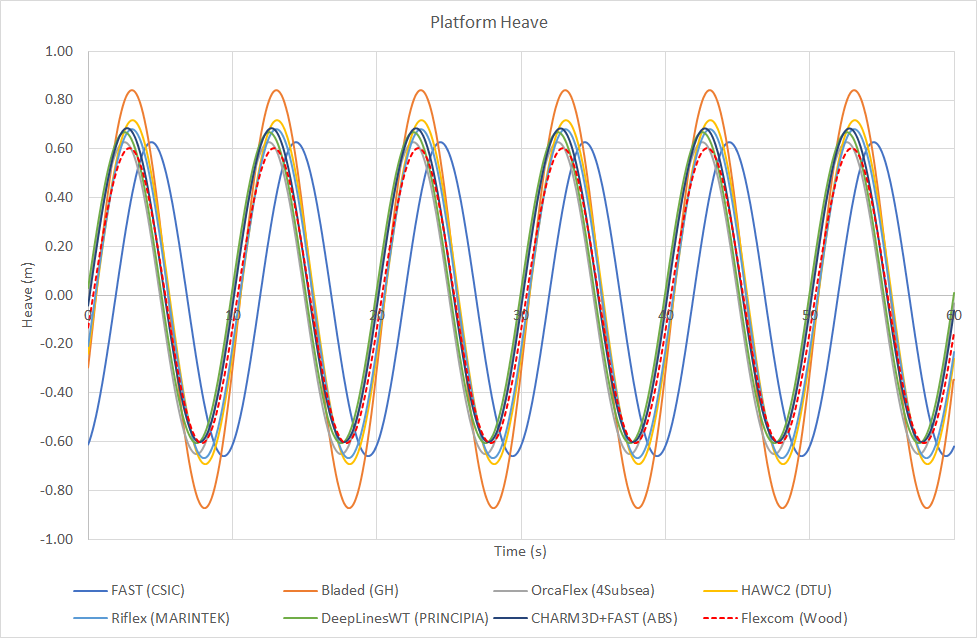
The surge response shows considerable variation across the different software products. Some of this may be attributed to the modelling of drift forces (refer to OC4 P2 LC2.1 for further information). Note however that results from FAST (Goldwind), Orcaflex (4Subsea) and DeepLinesWT (Principia) show a mean surge position which is lower than the other software tools. So there is a clear discrepancy between two groups of software in how mean surge is computed when both wave and current loads are included, as broadly speaking, surge motions showed reasonable agreement for wind and waves (OC4 P2 LC3.1) and current only (OC4 P2 LC2.3). This issue is not discussed in Robertson et al. (2014) and it is unclear as to what is causing it.
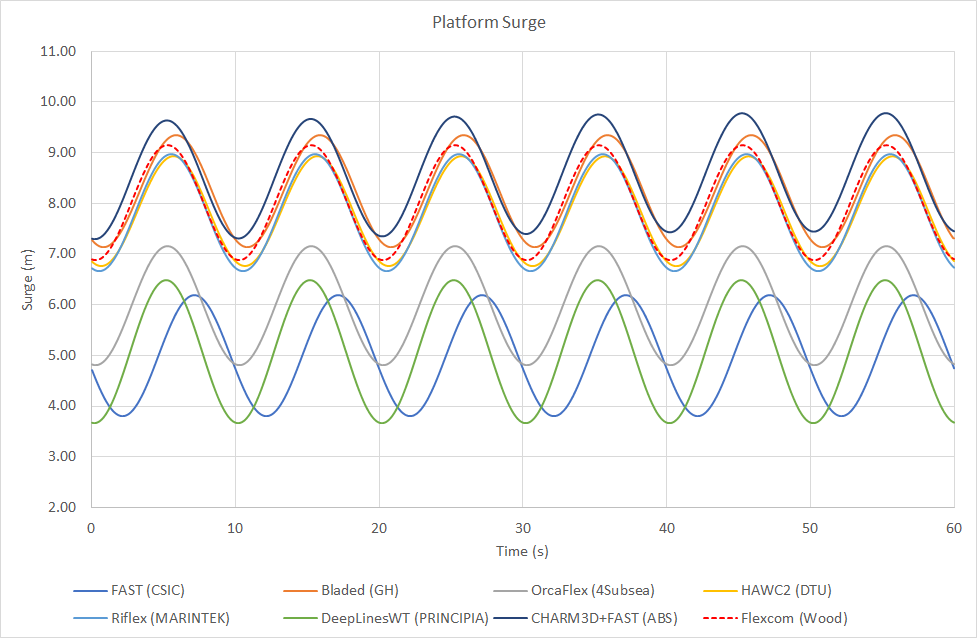
Flexcom's pitch response shows reasonable agreement with the other software tools, although the mean pitch is slightly lower than many of the other tools.
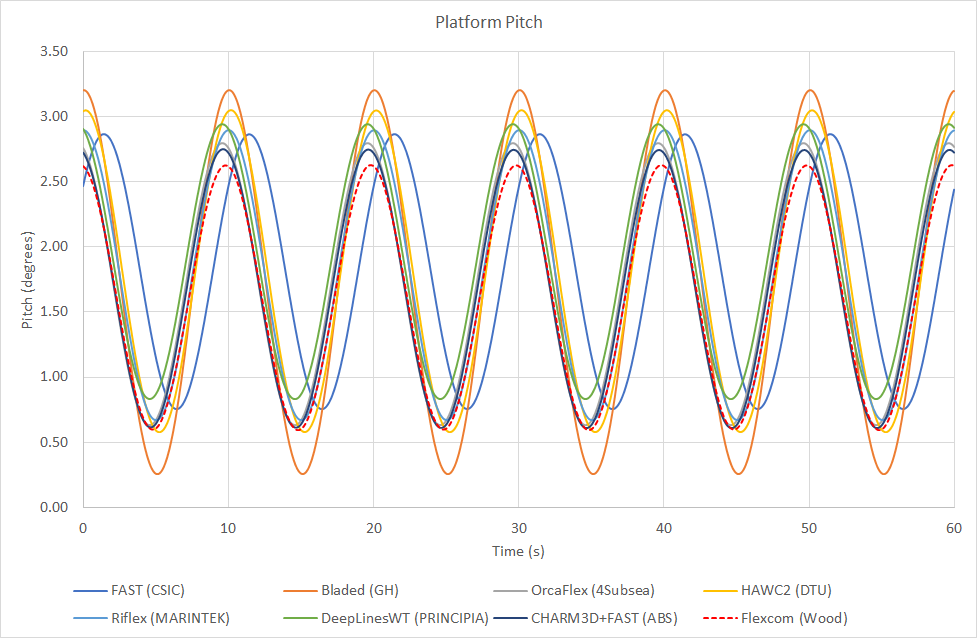
Results from Flexcom show reasonable agreement with the other software tools for bending moment at the base of the tower. The moments predicted by Flexcom are slightly lower than the other tools - it is believed this is related to the generator power discussed in the next paragraph. Results from Bladed (GH) show moment variations which are larger than the other software tools.
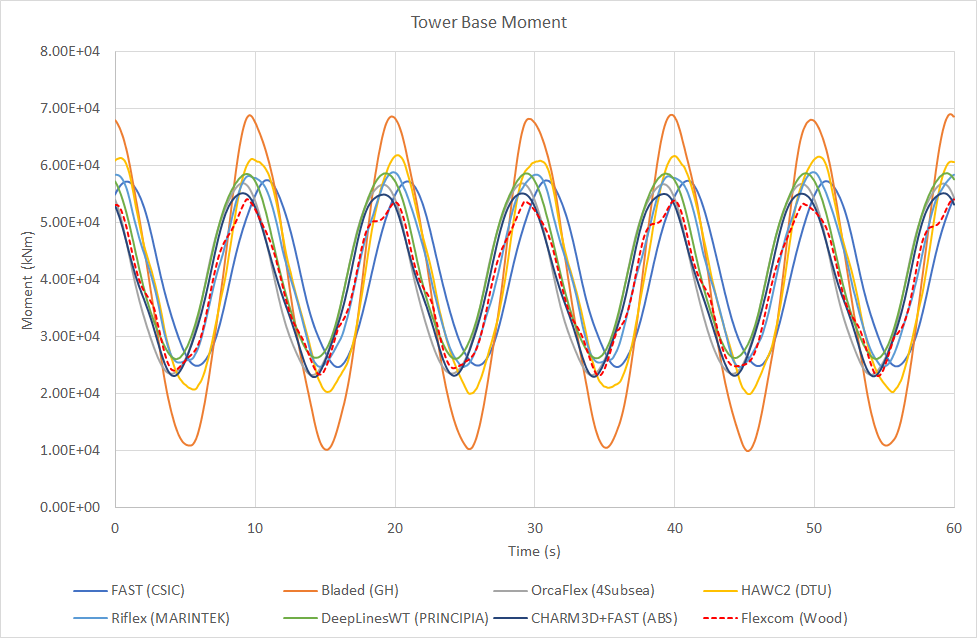
The generator power shows considerable variation across the different software products, with the mean power of the OC4 software tools considered ranging from 1.75MW (OrcaFlex/4Subsea, CHARM3D+FAST/ABS) to 1.99MW (Riflex/MARINTEK). The generator power predicted by Flexcom is slightly lower than most of the other software tools - Flexcom's mean power is 1.72MW, 5.6% below the average.
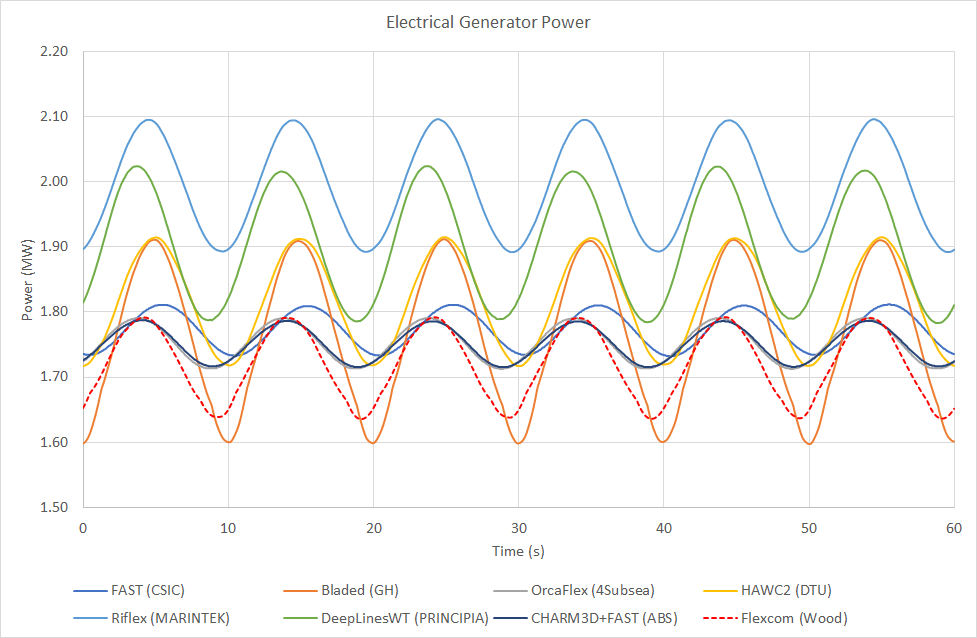
The variations in generator power are also evident in the primary variables of generator torque and rotor speed.
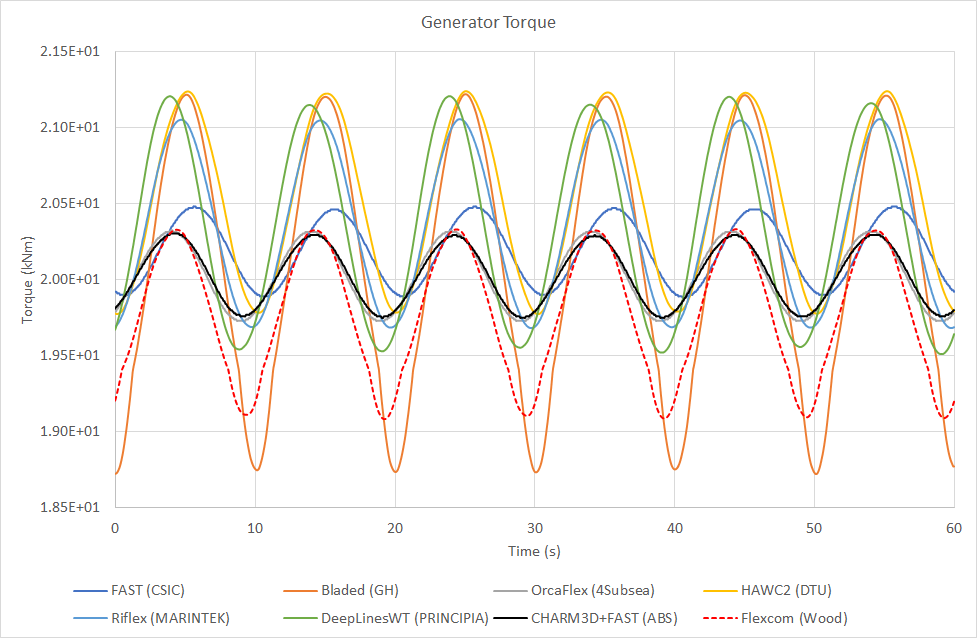
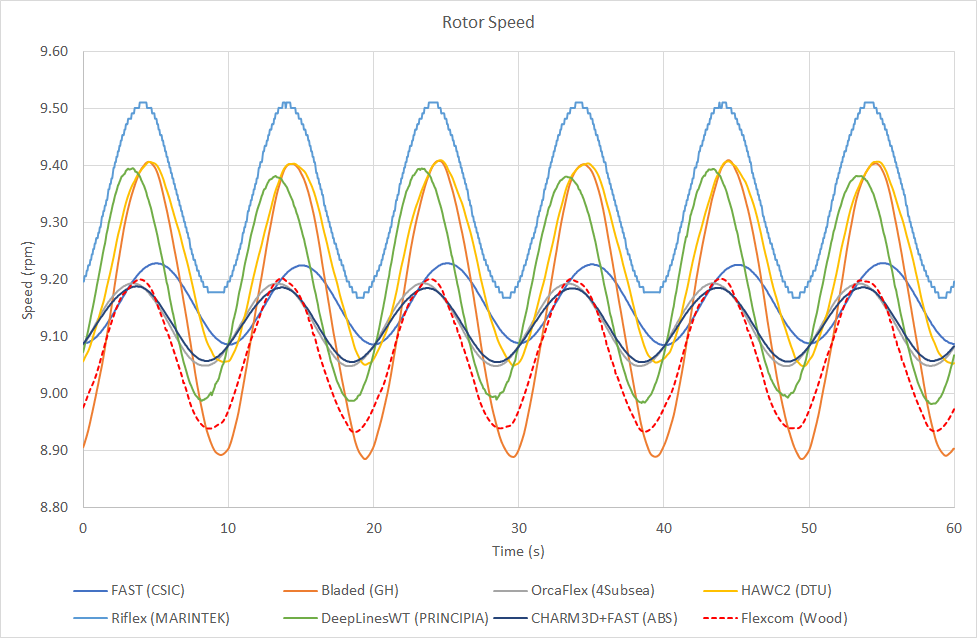
It is worth noting that the Flexcom results were produced using Flexcom 8.12.1 which is coupled with AeroDyn V15.02.04 (14-Apr-2016). The OC4 Phase II results were published in 2014 at which point the latest version of AeroDyn was Version 14. Improvements to the aerodynamic modelling software primarily account for the differences in generator power predicted by Flexcom and CSIC/FAST. Slightly different platform motions predicted by each software tool also influences generator power. Variations in the aerodynamic theories underpinning each software product may also be a contributing factor. You are referred to OC4 P2 LC3.1 if you are interested in a more detailed discussion.